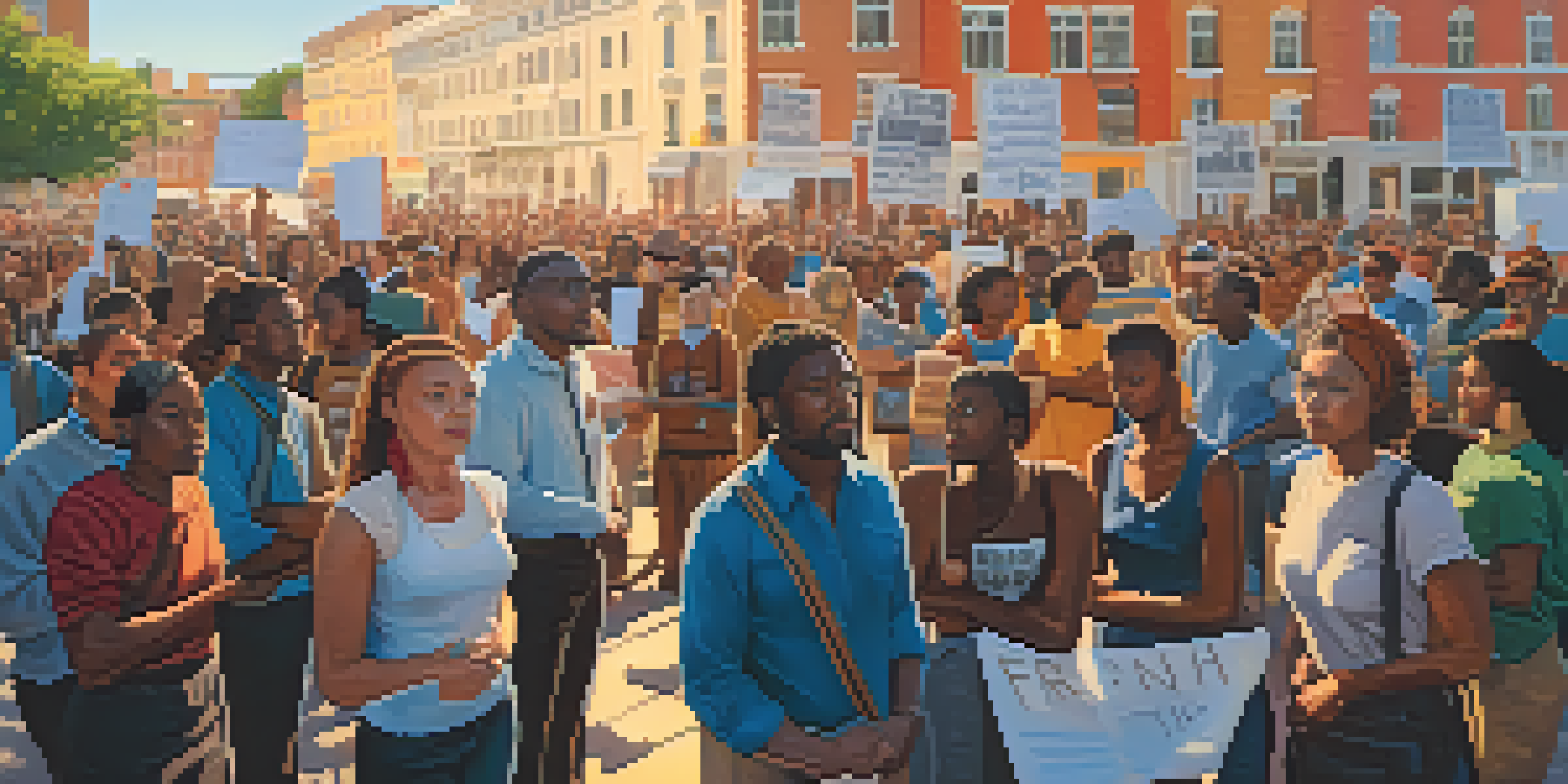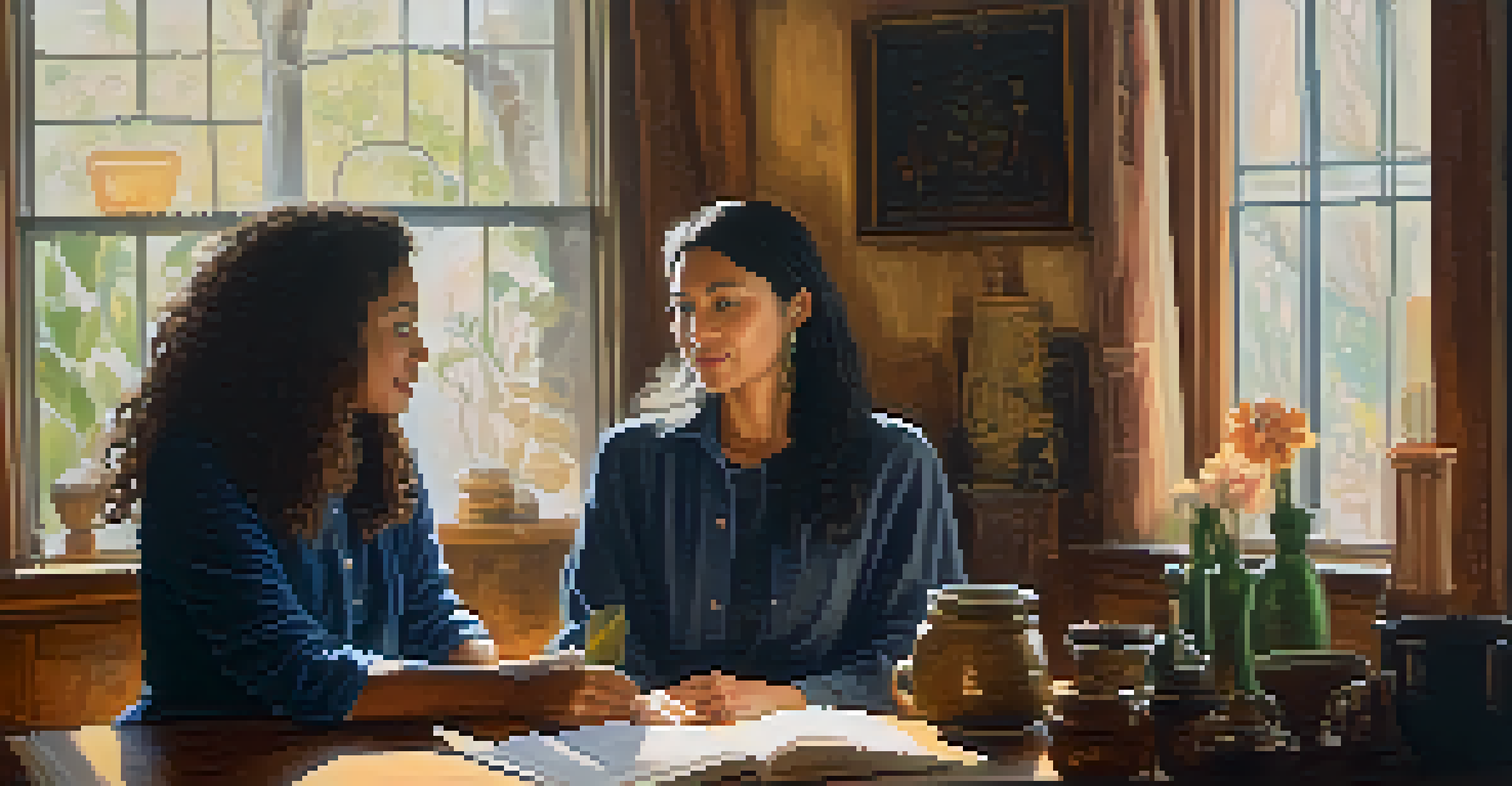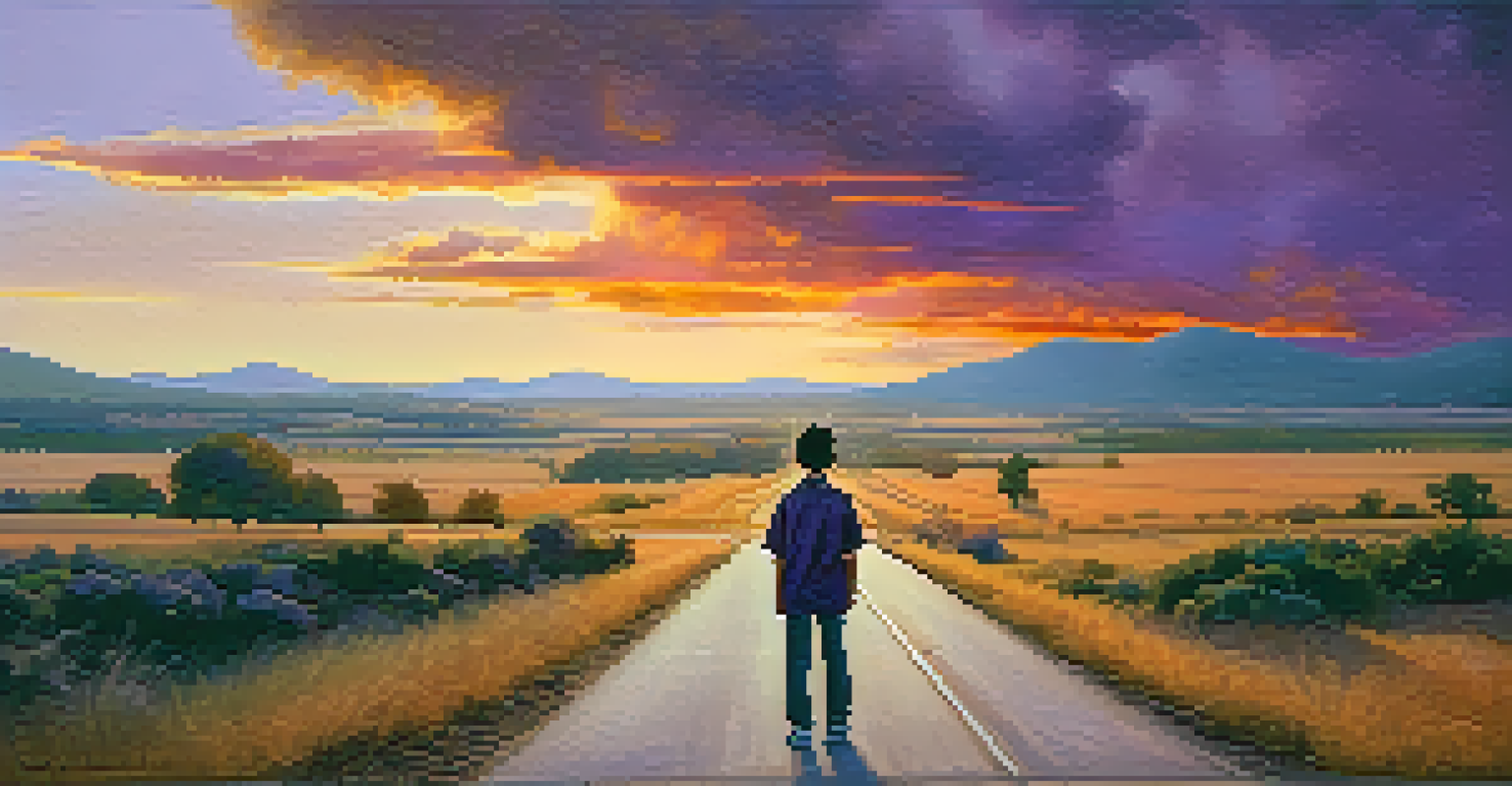The Role of Film in Documenting Social Movements

Film as a Powerful Tool for Social Change
Film has long been recognized as a compelling medium for storytelling and is particularly effective in highlighting social issues. It transcends language and cultural barriers, allowing diverse audiences to engage with pressing societal challenges. As a visual art form, film can evoke empathy and provoke thought, often stirring viewers to action.
Film is one of the most powerful forms of communication that we have today. It can inform, inspire, and motivate change like no other medium.
Documentaries, in particular, serve as a crucial vehicle for documenting social movements, offering an unfiltered glimpse into real-life struggles and triumphs. By capturing events in their raw form, filmmakers can present narratives that mainstream media might overlook or distort. This authenticity can inspire viewers and galvanize support for various causes.
Moreover, films often create a sense of community among viewers, fostering dialogue and shared experiences. When audiences connect with the stories portrayed, they feel a part of the larger movement, which can lead to increased activism and advocacy. In this way, film not only documents but also participates in the evolution of social movements.
Historical Impact of Film on Social Movements
Historically, films have played a significant role in shaping public perception and understanding of social movements. For example, the 1960s documentary 'The War at Home' highlighted the anti-Vietnam War protests, providing a platform for dissenting voices. Such films helped to raise awareness and mobilize support, demonstrating the potential of visual storytelling in advocacy.

Another notable example is 'Selma,' which chronicles the 1965 voting rights marches. This film not only commemorates a pivotal moment in American history but also reignites discussions about ongoing racial injustices. By reintroducing these narratives to contemporary audiences, filmmakers can bridge the gap between past and present struggles.
Film's Role in Social Change
Film serves as a compelling medium that highlights social issues, evokes empathy, and galvanizes support for various movements.
These historical examples reveal how film can serve as a catalyst for change, encouraging individuals to reflect on their values and beliefs. By documenting the journey of social movements, filmmakers can inspire new generations to continue the fight for equality and justice.
The Role of Documentaries in Social Awareness
Documentaries have a unique ability to educate viewers about complex social issues in an engaging way. By combining facts, interviews, and personal stories, they present a multifaceted view of the challenges faced by marginalized communities. This format makes it easier for audiences to grasp the nuances of social movements and the necessity for change.
The purpose of art is not a rarified, intellectual distillate; it is a lowly utility to be of service to the human spirit.
For instance, the documentary '13th' explores the intersection of race, justice, and mass incarceration in the United States. By shedding light on systemic issues, it compels viewers to confront uncomfortable truths and consider their role in the ongoing struggle for justice. Documentaries like these can often spark conversations that lead to greater awareness and mobilization.
Ultimately, documentaries serve as a bridge between the audience and the lived experiences of those involved in social movements. They not only inform but also empower viewers to take action, whether that be through advocacy, education, or community engagement.
Fictional Films and Their Social Commentary
While documentaries are crucial, fictional films also play an essential role in documenting social movements through allegory and narrative. By weaving social issues into compelling stories, filmmakers can reach broader audiences who might not engage with traditional documentaries. Films like 'The Hate U Give' tackle themes of racism and police brutality, resonating with viewers on a personal level.
These fictional narratives allow audiences to explore complex social issues in a relatable context. By following characters who face adversity, viewers can develop empathy and understanding, which can be transformative. This emotional connection can motivate individuals to learn more about the real-life issues depicted in the stories.
Documentaries Educate and Inspire
Documentaries effectively educate audiences about complex social issues, often sparking conversations that lead to greater awareness and action.
Furthermore, fictional films can ignite public discourse and inspire activism. When audiences are moved by a character's journey, they often feel compelled to take action, whether through social media campaigns or community efforts, making these films powerful tools for change.
The Influence of Social Media on Film and Activism
In today's digital landscape, social media has dramatically impacted how films about social movements are shared and consumed. Platforms like Instagram, TikTok, and Twitter allow filmmakers to reach wider audiences instantly. This accessibility has empowered grassroots movements and independent filmmakers, amplifying their voices and messages.
For instance, the hashtag #BlackLivesMatter gained immense traction through social media, leading to a surge in documentary films and content focused on racial justice. As these films circulate online, they encourage discussions and mobilize individuals to participate in protests and advocacy efforts. The synergy between film and social media creates a dynamic that enhances visibility for social issues.
Moreover, social media allows viewers to engage with filmmakers and activists directly, creating a sense of community and shared purpose. This interaction can lead to collaborative projects, increased funding for films, and more significant overall impact in the fight for social justice.
Challenges Filmmakers Face in Documenting Movements
Despite the power of film, filmmakers encounter numerous challenges when documenting social movements. One significant hurdle is the risk of misrepresentation or exploitation of the communities they aim to portray. It's essential for filmmakers to approach their subjects with sensitivity and respect, ensuring that their stories are told authentically and ethically.
Additionally, filmmakers often grapple with funding and distribution obstacles, particularly for independent projects. Securing financial support can be daunting, and without proper distribution channels, important stories may never reach the audiences who need to see them. This can stifle diverse narratives and limit the representation of marginalized voices in film.
Fictional Films Drive Empathy
Fictional films use relatable narratives to explore social issues, fostering emotional connections that motivate viewers to engage in activism.
Lastly, filmmakers may face backlash or censorship for their work, especially when tackling controversial subjects. Navigating these challenges requires resilience and a commitment to social justice, as filmmakers strive to bring important issues to light despite the obstacles they encounter.
The Future of Film in Social Movements
As we look toward the future, the role of film in documenting social movements is likely to evolve alongside technology and cultural shifts. With the rise of virtual reality and immersive storytelling, filmmakers can create more engaging experiences that allow audiences to step into the shoes of those involved in social movements. This innovation has the potential to foster deeper empathy and understanding.
Moreover, as global issues like climate change and inequality gain prominence, filmmakers are increasingly focusing on intersectional narratives that highlight the interconnectedness of various social movements. This broader perspective can unite diverse groups, creating a more significant impact in the fight for justice and equality.

In conclusion, the future of film in social movements is bright, with endless possibilities for creative expression and advocacy. As filmmakers continue to push boundaries and explore new mediums, they will undoubtedly play a crucial role in shaping public discourse and inspiring action in the years to come.